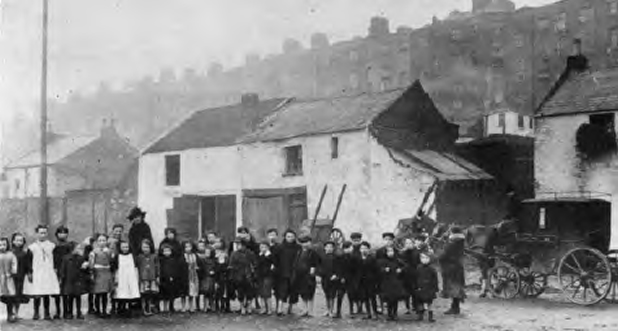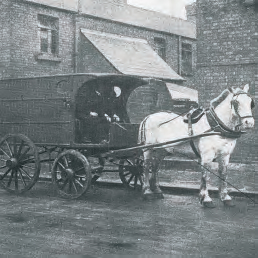
A housing inquiry in 1914 found that 16 members of Dublin Corporation owned tenements and it was clear that Corporation members intervened to foil the enforcement of regulations against their properties
While Dublin may have been regarded as the “second city” of the British Empire in the 19th century, the Dublin of 1911 had the worst housing conditions of any city in the United Kingdom. And its extensive slums were not limited to the backstreets or to impoverished ghettos: they also incorporated great Georgian houses on the capital’s previously fashionable streets and squares.
Overcrowding was rife, with 26,000 families living in tenement houses, and 20,000 of those living in single-room dwellings. One house in Henrietta Street was home to 104 people in 1911.
A housing inquiry in 1914 found that 16 members of Dublin Corporation owned tenements and it was clear that Corporation members intervened to foil the enforcement of regulations against their properties.
The Corporation did attempt a number of successful social housing projects, including one on Benburb Street and Corporation Buildings off the north quays. Other initiatives from the Dublin Artisans’ Dwelling Company and the Iveagh Trust provided greatly improved housing for the working-class, but these were necessarily limited in scale.
Tuberculosis (TB) was the biggest health threat, killing more than 12,000 people a year nationally. Many of these were in Dublin, where the disease spread easily through overcrowded tenements, mainly among those in the 15-25 age group.
Lady Aberdeen, wife of the Lord Lieutenant, started a campaign against TB. Germ theory was still poorly understood, and people still believed that “the white plague” was hereditary. The National Association for the Prevention of Tuberculosis and the Women’s National Health Association launched a campaign of education and eradication, with travelling wagons that disseminated information.

IMAGE ABOVE: a disinfecting van in Dublin in 1911. TOP IMAGE: a group of mostly barefoot children stand with a woman in Summerhill, near Gardiner Street in Dublin, ca 1913. Photos courtesy of RSAI; North Inner City Folklore Project
Other threats included typhoid, dysentery and other diseases mainly caused by overcrowding, unsanitary living conditions, poor nutrition and lack of hygiene. Families were large: 36% of married women in 1911 had seven children or more.
The death rate in Dublin per thousand was 22.3; in London it was just 15.6. In particular, childbirth was life-threatening for many mothers. Geographical location and social class were major determining factors in mortality. Babies born in urban areas were twice as vulnerable as those born in the countryside: the urban infant mortality rate was 150 per 1,000 live births, while in rural areas it was 74 per 1,000.
A baby born into the family of a labourer was 17 times more likely to die within a year than was the child of a professional.
Sufferers of mental illness often ended up in one of the city’s asylums or in the workhouse. The 1911 census return for the Richmond Female Lunatic Asylum in Upper Grangegorman lists 900 patients, suffering from such illnesses as melancholia, paranoia, mania, dementia, imbecility and epilepsy, which was wrongly believed to be a mental illness.
Crime in Dublin was more associated with petty theft than with violence, and the city was notable for high levels of public drunkenness and disorder. In 1910 there were 2,462 charges of drunkenness in the Dublin Metropolitan police district, while a total of 3,758 people were drunk when they were taken into custody.
The nature of crime in the city was naturally reflected in the makeup of the prison population.
The prisons of Dublin, including Mountjoy and Gloucester Street, were home to hundreds of petty criminals, invariably from the poorer areas of the city, but Dublin was not regarded as particularly crime-ridden. There was some serious crime, however, and the prison records document men in custody for indecent assault, conspiracy to extort money, shop-breaking, manslaughter and infanticide.
Typically for a city in which large numbers of men lived away from home and where female poverty was rampant, prostitution was a thriving business in Dublin. Religious organisations – both Protestant and Catholic – frequently attempted to close brothels in the city, while a number of the now infamous Magdalene asylums attempted to “save” or “reform” women who worked the streets.
Brothels, or “kip-houses” as they were known locally, were an established feature of life in tenement areas. The Monto district around Gloucester Street was the best known home to prostitutes in the city, but there were also well-known brothels around the docks and in the south inner city.
Caitríona Crowe is editor of Dublin 1911, published by the Royal Irish Academy.
PLEASE NOTE: This article was originally published in the Liberty newspaper, the monthly SIPTU newspaper which is distributed to over 50,000 union members, and we have republished it with their very kind permission.
This particular article is taken from the October 2013 special issue, which marks the centenary of the 1913 Lockout.
PDF: Click here to view the entire 1913 Lockout centenary issue.









